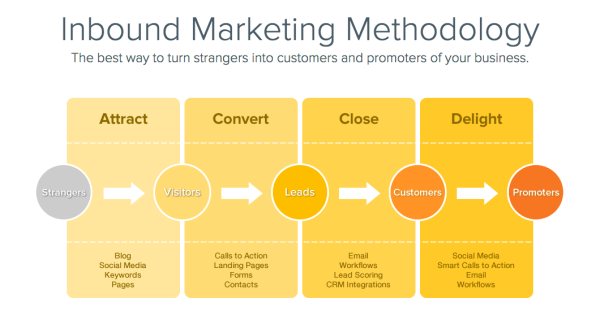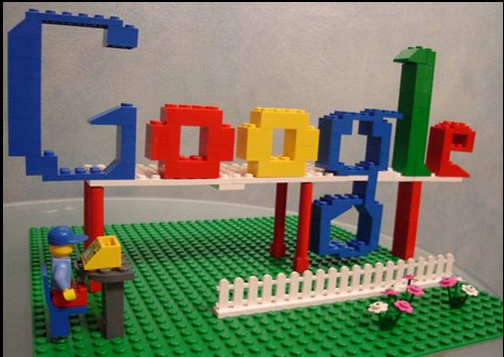Step 1 is complete. You’ve chosen your keywords so you can increase your website’s chances of ranking for those keywords. Search engine optimization (SEO) is about doing just that. With this being said, however, we need to keep in mind we are optimizing for two audiences. Audience #1 is made up of humans. Audience #2 is made up of search engines.
Why Optimize?
There are many answers to this. For the purposes of this post, we are defining optimizing as getting found via online searches using “white hat” or ethical tactics.
In order to get found, you should aim rank high in search engine results for your keywords and key phrases. Google suggests that you design your website for visitors, and not for search engines. While you should keep this principle in mind, it is worthwhile to learn a bit more about SEO in order to better optimize your site.
What You Should Know About SEO
SEO can be divided into two separate categories: on-page SEO and off-page SEO.
On-page SEO refers to how well your website’s content is presented to search engines. This can often be improved immediately.
Off-page SEO refers to your site’s overall “authority” on the web, which is determined by what other websites say about your site. This can take time to improve. But don’t be discouraged. With consistent attention to off-page SEO, the results can be great.
Even though on-page SEO accounts for only about 25% of how search engines score and rank your website, it’s worth tackling first since it can be improved quickly.
Nine Elements of Successful On-Page SEO
1. Page Title
Page titles are one of the most important on-page SEO factors. Page titles are the text you see at the top of your browser window when viewing a web page.
They are also the title of a page that is presented in search engines. Page titles can be found and edited in your site’s HTML. The text that is surrounded with the <title> tag is your page’s title.
The following are a few guidelines for coming up with effective page titles:
- Include Keywords
- Use fewer than 70 characters long. Longer page titles will not be see in your web browser or in Google search results. If you make the page title too long, it will also dilute the importance of the keywords mentioned.
- Put keywords as close to the beginning of the title as possible.
- Make it readable for site visitors.
- Include your company name at the end of the page title, unless you are big brand and people search for you through your brand name.
- Use different page titles for each page. Each page is an opportunity to target different keywords.
2. Meta Description
The Sales Lion, Marcus Sheridan, wrote a brilliant post on meta descriptions. It’s a must read. But meta data is simply the text that appears beneath a page title in Google search results (see below).
This meta description is an often overlooked opportunity to attract visitors from search.
It is important to note meta descriptions don’t directly affect search engine rankings and they won’t be visible on your website. So why should you use them? The meta content can attract a potential customer’s attention and indicate if a search result is particularly relevant to them. So, we recommend including keywords in your meta description to draw in visitors. Also, keep them short (150 characters or less).
If you don’t include a meta description, search engines such as Google will typcially display part of the content from the page in the search results.
3. Headings
Headings are typically the larger/more prominent text on a web page. You can verify something is a heading by checking the HTML code of your website, and seeing if that text has an <h1>, <h2>, or <h3> tag surrounding it. Ask a developer to help you check this.
Headings are more likely to be read by search engines as keywords than text in the rest of the page. For this reason, it is good to include keywords in your headings whenever possible. <h1> tags are given more value by search engines over <h2> tags. <h2> tags have more weight than <h3> tags. While <h4> and <h5> tags do exist, their influence on keywords is virtually the same as that of regular text.
Including too many headings reduces the value of keywords in other headings, so we recommend using the <h1> tag only once per page. If the page is text-heavy like a blog post, then feel free to use in a few <h2> or <h3> tags your as paragraph titles.
4. Cascading Style Sheets (CSS)
HTML is the back-end code of your website that search engines read. Search engines extract relevant information from your HTML, such as keywords.
Cascading Style Sheets (CSS), on the other hand, holds a template for the layout of your page. In the CSS, you define how headings, links, and other visual elements of the text should look.
The takeaway here is simple: use CSS. Putting layout-related information in your HTML can dilute the relevance of the HTML text, which is what you want search engines to read. So make sure your site uses CSS and HTML, not just HTML.
5. Images
Images on a web page are very valuable and often improve a website visitors’ experience. When using images into your website, you should keep in mind the following:
- Don’t use images excessively. More pictures means your page will take longer to load. This has a negative impact both on user experience and search engine optimization.
- Associate text with pictures. Search engines do not ‘read’ images; they read only text. ALT text is an HTML attribute you can add to your picture so search engines replace the image with some associated text.
- Include keywords in your image file name. This will help you draw in relevant traffic from image searches. Separate different keywords in the file name with a dash (-).
6. Domain Info
Search engine rankings favor sites that are registered for a longer period of time. Longer domain registrations indicate a commitment to the site and mean the site has a lower chance of being considered to be spam. Extend your website registration for $10-20 a year for an SEO boost.
7. MOZ Rank
MOZ Rank is a general measure of how much online authority your site has. A higher MOZ rank is better. Note that MOZ Rank factors in both on-page and offpage SEO. Improving your on-page SEO may help improve your rank, but there is much more you can do to improve it. Don’t worry, we will get to all this.
8. Google Crawl Date
When Google crawls your site, it updates the information related to it, such as your keywords and other SEO factors. Therefore, you want Google to crawl yoursite as often as possible. The best thing you can do to make Google crawl your site more frequently is to regularly produce fresh content and publish it on your website. We’ll cover this in more detail in Step Three.
9. URL Structure
The URL of a web page is its web address. For example, our website has a URL of http://3rhinomedia.com. The URL structure of a website is about how the different URLs connect with each other.
Unfortunately, improving your URL structure is one of the more difficult aspects of on-page website optimization. The methods of fixing these issues depend entirely on how your website is programmed — such as your content management system or programming framework. Nevertheless, if you have a competent developer by your side, having him or her tackle these issues can significantly improve your SEO. Your best approach might be to hand your developer the following list.
Principles of Good URL Structure:
- Apply a 301 redirect where required. A 301 redirect forwards an old URL to a new one after it changes. Make sure you do this if you change the URL of a page on your site. A common mistake is not applying a 301 redirect between yoursite.com and www.yoursite.com. This can be quite a problem from an SEO standpoint, because search engines will give separate credit to both versions of your site.
- Avoid pages with deeply nested URLs. Here is an example of what a deeply nested URL would look like:http://yoursite.com/about/management/contact/phone. Deeply nested pages will get less SEO credit. You can fix this problem by improving your overall site design.
- Include keywords in your URLs. If you’ve already purchased your main URL, then don’t worry about buying a new one just for this sake. But you can clean the URLs of your interior pages to include keywords and not look like gibberish.
- For your internal page URLs, separate individual keywords with dashes (-). For example: http://3rhinomedia.com/Inbound-marketing-center/ is a good URL that captures “inbound” and “marketing” and “center” as keywords. Create static URLs, not dynamic ones. This means that the URL for one of your pages should be the same, no matter what. Check if you see different URLs for the same page in your website. If there are, you can look into how to create static URLs with your web server software. Do a Google search on “create static URL” + (name of your server software).
Avoid “Keyword Stuffing”
After reading this, you might think, “Keywords are really important. If having keywords all over my page helps me rank for them, I should just fill my page with these keywords.”
Unfortunately, it’s not that easy. Overuse of keywords leads to a bad experience for site visitors and search engines are smart enough to detect these behaviors. Trying to ‘trick’ search engines is not a good SEO strategy, and sacrificing readability for SEO will utimately hurt your digitial strategy.
Improving Off-Page SEO With Inbound Links
If on-page SEO accounts for 25% of your overall search engine ranking, what makes up the remaining 75%? Offpage SEO is based on the authority of your website, or what other websites ‘say’ about yours. Simply put, websites with better or higher authority will rank better than websites with lower authority.
What Influences Website Authority?
Inbound links are a major factor. If another website links to your website or a page on your website (like a blog article), that is called an inbound link. The more inbound links your site has, the better the authority. Also, the more inbound links from websites with high authority themselves, the better (e.g. an inbound link from The New York Times website is much more valuable than an inbound link from a low-trafficked blog with a small readership).
What’s the best way to attract more inbound links (or ‘link love,’ as we like to call it)?
Through content creation! Creating valuable, remarkable content that other websites will naturally want to link to in their own content is a great way to increase your website’s inbound links. In addition, you can improve your chances of attracting inbound links by sharing your content in social media and optimizing it for search results so it can easily be found. We’ll discuss content creation more in Step Three of this ebook and social media promotion in Step Four.






